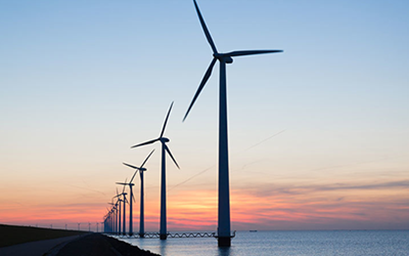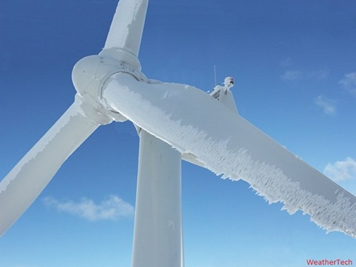Wind power is a vital renewable energy source, and its use significantly reduces greenhouse gas emissions to help tackle climate change. The capacity of wind power has rapidly increased globally, generating over 650 GW of clean, renewable electricity.
This growth has been facilitated by developments in turbine technology that have helped maximize power output, cost-efficiency, and reliability. One essential factor in modern turbines is the extensive utilization of pressure sensors throughout wind turbine critical systems.
Pressure sensors have become an important component in the wind power industry, serving a key role in the improvement of the safety, performance, and overall output of wind turbines. This article describes how pressure sensors improve wind power generation.

Image Credit: Superior Sensor Technology
Wind Speed Monitoring and Control
One of the main functions of pressure sensors in wind turbines is to accurately monitor wind speed. Wind speed is a critical factor in determining the optimal performance of a turbine.
Pressure sensors are typically mounted at various points on the turbine’s blades and tower to allow for the continuous measurement of the dynamic pressure created by the wind. By evaluating these pressure measurements, the turbine’s control system can then adjust the blade pitch and rotor speed to help optimize energy capture while ensuring the turbine operates within safe limits.
Pressure sensors allow real-time adjustments in response to variations in wind speed, turbulence, and gusts. This ensures the efficient operation of the wind turbine and avoids potential damage due to high winds. This fine-tuned control helps maximize energy output, as well as extend the equipment’s lifespan.
Vibration and Structural Health Monitoring
Wind turbines operate in harsh and varying conditions, causing wear and tear on their components over time. Pressure sensors serve a key function in monitoring the structural health of wind turbines through the detection of vibrations and pressure variations due to factors such as rotor imbalances, wind-induced vibrations, and mechanical issues.
When pressure sensors detect abnormal vibrations or pressure changes, they trigger alarms, enabling operators to quickly take any maintenance and repair actions. This preventive strategy helps avoid costly breakdowns and ensures the safety of the equipment and nearby communities.
Wind Farm Optimization
Pressure sensors are not only utilized on an individual wind turbine level; they also serve a crucial role in the optimization of entire wind farms. Wind farm operators utilize data collected from pressure sensors on multiple turbines to evaluate wind patterns and make informed decisions regarding the placement and configuration of turbines.
The strategic placement of turbines based on pressure sensor data enables operators to exploit the most favorable wind conditions at different locations and heights within the wind farm. This optimization improves the wind farm’s overall energy yield and contributes to a more efficient use of available land and resources.

Figure 1. Sketch of a wind farm. Image Credit: Superior Sensor Technology
Ice Detection and De-Icing
In cold climates, the buildup of ice on wind turbine blades can substantially reduce their efficiency and present safety risks. Pressure sensors can detect the accumulation of ice on the blades of a turbine by monitoring changes in pressure due to the added weight and changed aerodynamics.
When ice is identified, pressure sensors activate de-icing mechanisms like heaters or mechanical tools to counter or prevent ice buildup. This preventive measure ensures the turbine functions effectively in challenging weather and reduces downtime due to ice-related problems.

Figure 2. Wind turbine with ice. Image Credit: WeatherTech
Power Curve Optimization
The relationship between wind speed and the electrical power generated by a wind turbine is represented by the power curve. Pressure sensors, together with other sensors and control systems, are employed to continuously alter the pitch angle of the turbine blades to fit the incoming wind conditions.
This optimization enables the turbine to operate at maximum efficiency, even under variable wind speeds.
Fine-tuning the power curve using pressure sensor data enables wind turbine operators to obtain more energy from the available wind resources. This improves the overall economic viability and energy output.
Environmental Impact Reduction
Pressure sensors are key to helping reduce the environmental footprint of wind power generation. Wind farms can generate more electricity with fewer turbines by optimizing their performance, reducing the land footprint, and minimizing ecosystem disruption.
Moreover, with pressure sensor data, the efficient operation of wind turbines results in lower greenhouse gas emissions and a reduced reliance on fossil fuels for electricity generation.
Conclusion
Pressure sensors have become a necessary component in the wind power industry, improving the efficiency and reliability of wind turbine operation. They serve a multifaceted function in enhancing the generation of wind power, including ice detection, wind speed monitoring and control, and structural health monitoring.
By harnessing the power of these sensors, wind farm operators can optimize energy output, reduce maintenance costs, and contribute to a greener, more sustainable future. Programmable, application-specific pressure sensors like those from Superior Sensor Technology will play an increasingly vital role in the ongoing growth and development of wind power generation worldwide.

This information has been sourced, reviewed and adapted from materials provided by Superior Sensor Technology.
For more information on this source, please visit Superior Sensor Technology.